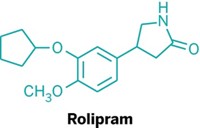Advertisement
Grab your lab coat. Let's get started
Welcome!
Welcome!
Create an account below to get 6 C&EN articles per month, receive newsletters and more - all free.
It seems this is your first time logging in online. Please enter the following information to continue.
As an ACS member you automatically get access to this site. All we need is few more details to create your reading experience.
Not you? Sign in with a different account.
Not you? Sign in with a different account.
ERROR 1
ERROR 1
ERROR 2
ERROR 2
ERROR 2
ERROR 2
ERROR 2
Password and Confirm password must match.
If you have an ACS member number, please enter it here so we can link this account to your membership. (optional)
ERROR 2
ACS values your privacy. By submitting your information, you are gaining access to C&EN and subscribing to our weekly newsletter. We use the information you provide to make your reading experience better, and we will never sell your data to third party members.
Pharmaceuticals
Tandem Fix For Badly Folded Proteins
September 8, 2008
| A version of this story appeared in
Volume 86, Issue 36
Diseases associated with a loss of protein function often arise when a mutation prevents the relevant protein from folding properly and performing efficiently. Researchers at Scripps Research Institute have now devised a method that sufficiently improves the folding of mutant proteins to restore their function (Cell 2008, 134, 769). Jeffery W. Kelly, Laura Segatori (now at Rice University), and colleagues carried out the work with cells cultured from Tay-Sachs and Gaucher's disease patients. They first determined that compounds such as celastrol improve the folding and function of mutant proteins in the cells. These "proteostasis modulators" enhance the cells' normal protein-folding activity by increasing production of chaperone proteins and folding enzymes. The team then showed that proteostasis modulators work even better when combined with small molecules known as "pharmacologic chaperones," such as N-(n-nonyl)-deoxynojirimycin (NN-DNJ). The two types of compounds act synergistically to stabilize the mutant protein in its properly folded state. Such compounds could be used as the basis for oral treatments for a number of diseases marked by misfolding proteins, Segatori says.




Join the conversation
Contact the reporter
Submit a Letter to the Editor for publication
Engage with us on Twitter